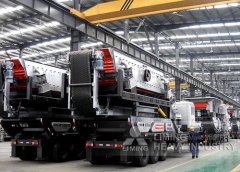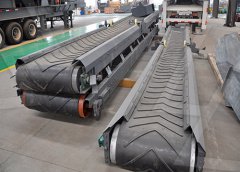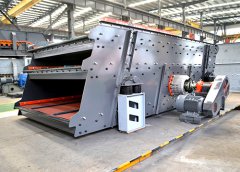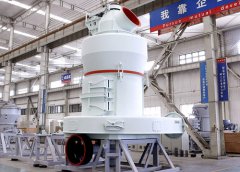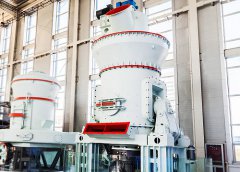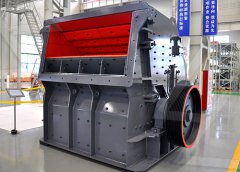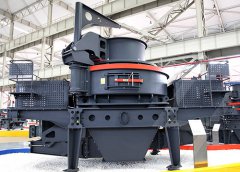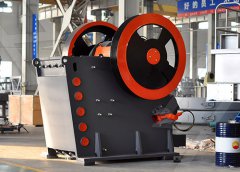
The conveyor belt and its operating principles Eurotransis
The conveyor belt and its operating principles. Conveyor belts, as well as roller conveyors, have a key role to play in the efficient movement of all types of goods within a production plant, an industrial warehouse or any logistics company.Last updated February 19, 2021. The belt conveyor is a conveyor belt that is supported by upper and lower rollers as a bearing member and a traction member. It bypasses the head and tail rollers to form a closed-loop The working principle and characteristics of belt
احصل على السعر
Belt Conveyor an overview ScienceDirect Topics
Belt conveyors are often used for cooling hot solids, either by natural convection or by blowing air across the belt. The time for cooling governs the length of the conveying The conveyor belt installation must be equipped with guards, electrical protection, overload protection, interlocks, trip wires and safe access points. Personnel SAFE OPERATION OF CONVEYOR BELTS Rio Tinto
احصل على السعر
Introduction to Conveyor Belt Systems Technical Articles
A belt conveyor uses a belt to transport material from one point to another. The belt is stretched across the conveyor length with pulleys at both ends to Conveyor belts move bulk materials better and faster than any other method. Belt conveyors are simple systems that contribute greatly to productivity when properly understood and maintained. By Basics of Belt Conveyor Systems & Operation
احصل على السعر
Speed control of belt conveyors during transient operation
There are however no studies that describe the operation of speed controlled belt conveyors during transient operation. This paper presents a three-step 1. Introduction. Belt conveyors play a significant role in the dry bulk handling systems. Due to the development of rubber technology, conveyor belts Green operations of belt conveyors by means of speed control
احصل على السعر
The Analysis of Effectiveness of Conveyor Belt
its minimum value necessary for the correct operation of the conveyor (Kulinowski, 2013A, Li, 2002, Zhang et al., 2010). Among the tensioning devices used to tension the belt of conveyor or trunk belt conveyor. The 11200 belt conveyor is used for conveying potash ore or other rock mass (coal and shale) with grain size less than 300 mm along straight mines. The main belt conveyor model MKL1-1200, with maximum length L = 550 m, was designed by Soligorsk Institute of Resource Efficiency Problems with System for Mine Belt Conveyors MDPI
احصل على السعر
Historical Background and Evolution of Belt Conveyors
The evolution of belt conveyors, as an important type of continuous conveying machinery, is examined here in a historical perspective. For this purpose, the selected period is from the ancient time, i.e. occurrence of conveying equipment, and up to the end of the nineteenth century. The basic postulation of a modern machine, including Wire Rope Core Conveyor Belt (GB/T 9770–2013), the width of steel wire rope core conveyor belt is 800–3200 mm, and the strength range of conveyor belt is 630–7500 N/mm. The types of steel wire core belt include the ordinary conveyor belt, the flame retardant conveyor belt, the high temperature resistant conveyor belt, theBelt Conveyor, Structure and Principle Classification of
احصل على السعر
Belt Conveyor an overview ScienceDirect Topics
The operating condition of the belt conveyor can be in the range of −20°C to +40°C, whereas the temperature of the materials conveyed can be below 50°C. In the industrial production process, the belt conveyor can be used as a link among production facilities to achieve the continuity and automation of production processes, thus improvingBest Practices: Vulcanize the belt as opposed to mechanical splice. Use steel flat pulleys as opposed to winged pulleys. Load when the belt is fully troughed. Make sure the belt is tensioned properly. Be sure all rolling components are clean, rolling, and aligned. When a vulcanized splice can’t be used, skive mechanical splices.Basics of Belt Conveyor Systems & Operation Martin Eng
احصل على السعر
CALCULATION OF TENSION FORCE OF BELT CONVEYOR
Fig 1 Principle scheme of conveyor Todd, Larry, Andrew [2002], Baldin, Furlanetto, Turco [1982] Belt conveyors have shown the ability to transport materials that vary from large, heavy, sharp2.6 Conveyor belt operating conditions safety requirements 33. 2.6.1 Power transmission moving parts. The principal conveyor components are defined below and illustrated in Figures 1-1 to 1-3.(PDF) Best Practices on Conveyor Safety ResearchGate
احصل على السعر
Non-Destructive Testing of Pipe Conveyor Belts Using Glass
Belt conveyors have been used in a wide range of applications because in comparison to the alternative solutions represented by the rail or road transportation, their operation is typically more cost effective, with lower energy demands and the possibility of utilizing renewable energy sources, and during their operation, less noise and air Parts of belt conveyors: 1. Belts: Various types of textile belts are employed in belt conveyors: Camel hair, cotton (woven or sewed), duck cotton. Rubberized textile belts are widely used. Conveyors belts should meet the following requirements: 1. Low hygroscopocity 2. High strength 3. Low own weight (Light in weight) 4. Small specificBelt Conveyors Khulna University of Engineering
احصل على السعر
Innovative diagnostic device for thickness measurement of conveyor
The most expensive and emergency part of the conveyor is the belt. It is estimated that its cost is about 60% of the cost of the entire conveyor 5.During operation, it is exposed to unfavourableThe paper presents variable speed belt conveyor system where the reference speed is changed in order to achieve improved energy efficiency of operation. The recorded measurements show that belt(PDF) Speed Controlled Belt Conveyors: Drives and
احصل على السعر
Belt conveyor Principle Instrumentation Engineers
The belt conveyors are capable of carrying a greater diversity of bulk solid products from fine grain to bulk material at higher rates and over longer distances. Principle of operation: A belt conveyor is simply an endless strap of flexible material stretched between two drums and supported at intervals on idler rollers. When the drum rotated by A conveyor at 30 degrees has a cosine = 0.866. Therefore, a weight of 40 pounds on the conveyor would result in a measured force of 34.64 lbs on the scale. A fixed angle conveyor scale can be Application and Operating Principles of Conveyor
احصل على السعر
A deep learning-based method for deviation status
In recent years, belt conveyor systems have also developed in the directions of intelligence (Pang, 2010) and energy savings (Halepoto et al., 2016; He et al., 2016; Zhang and Xia, 2010). A normal and healthy equipment running status is the premise for ensuring the safe operation of a belt conveyor system.For applications that may require the “unorthodox” width greater than the length, type of conveyor, modular belt conveyors will achieve that feat much easier. Since they are non-metallic, easy to clean, and porous to gas and liquids, modular belt conveyors can be applied in: Food handling. Fluid handling.Belt Conveyors: Components, Types, Design, and
احصل على السعر
Testing and calibration of continuously operating belt
support the system and enable the belt to take its operating position. By applying additional hardware and software control with automatic belt weighers, the display of weighed values is hindered until reaching a stable temperature. Setting the weigher zero is carried out at the unloaded conveyor belt moving at constant speed, and in the durationOperating Principle. The operating principle is simple; chain is driven by a series of motorized gears or sprockets that are mounted on a conveyor path. As the chain moves, it pulls the materials along with it. Large objects, such as pallets, are typically placed on a series of rollers or a belt that sits on top of the conveyor bed.Chain Conveyor Systems ABM Equipment
احصل على السعر
How Does a Conveyor Belt Works? Storage Equipment
A belt conveyor is a material handling device that uses an endless belt to transport items from one place to another. The components of a belt conveyor system include the pulley, the belt, and the motor that drives it. The working principle of the belt conveyor is simple: it uses a motor to power an idler pulley, which in turn causes the Belt conveyor speed control is defined as a method of adjusting the conveyor speed to reduce energy consumption [6]. Generally, belt conveyors are running at designed nominal speed and in the most cases the belt conveyors are partially loaded. In such cases, the conveyor speed can be adjusted to match the material flow and the Green operations of belt conveyors by means of speed control
احصل على السعر
